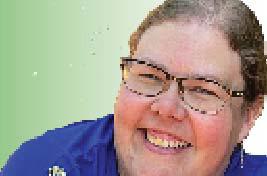Wyndi Veigel-Gaudette Content Editor
“All the roads are closed,” my mom told me on Feb 27. “We are sheltering in place.”
I knew the fire was bad. I had watched it grow in four hours from 100,000 to 250,000 acres. We didn’t know we were watching the monster that would become the largest fire in Texas history.
I grew up and graduated from Borger in the Texas panhandle. My family still lives there and I have cousins in Stinnett and Spearman, friends in Canadian, Fritch, Amarillo and Dumas. All names that would be plastered on every media outlet in the nation as the Smokehouse Creek fire took its toll.
Those that live in the Texas Panhandle are a different breed of Texans. They’re what “real” Texans feel like ... super friendly, polite, welcoming and unfailing loyal.
They’re hard working and resilient. They have to be.
Over the years I’ve seen wildfire after wildfire decimate the area. In 2006, there was a series of wildfires that ultimately burned 907,000 acres of land and killed 12 people.
In 2017, a half million acre wildfire took the lives of Cody Crockett, Sydney Wallace and Sloan Everett as they tried to save cattle by cutting fences.
The toll of the Smokehouse Creek fire will most likely remain unknown for some time but it has consumed 1.2 million acres, killed Cindy Owen and Joyce Blankenship and so many cattle that it is affecting the beef market.
Fritch fire chief, Zeb Smith, 40, whose town was one of the hardest hit, died while fighting a structure fire after a week spent battling the largest wildfire in Texas history.
“He was willing to put his own life on the line to save the property of others, and that is what Texas heroism is all about,” Gov. Greg Abbott said.
That heroism has been seen far and wide as strangers from across the state help those in the Panhandle start to pick up the pieces.
In an area known for its contribution to the beef industry, thousands of bales of hay have been transported in to help ranchers save cows that literally now have no grass left to eat.
Places that have been accepting donations, including those in Borger, have had to put a temporary stop on receiving items because the outpouring of help has been so great.
This area isn’t a stranger to its own fires after the Eastland Complex fire took its own toll in 2022.
As a fellow Dubliner and Panhandler, my heart smiled when I began seeing Texas livestock groups created for helping those during 2022, reversing the help for ranchers in the Panhandle. In a matter of hours, hay and feed was being transported up.
It doesn’t matter where the help is needed in Texas. Texans are going to step up to the plate to help their own.
Though the Texas Panhandle is beaten, the spirits of those living there remain unbroken. And the rest of Texas is here to help make sure they stay that way.

